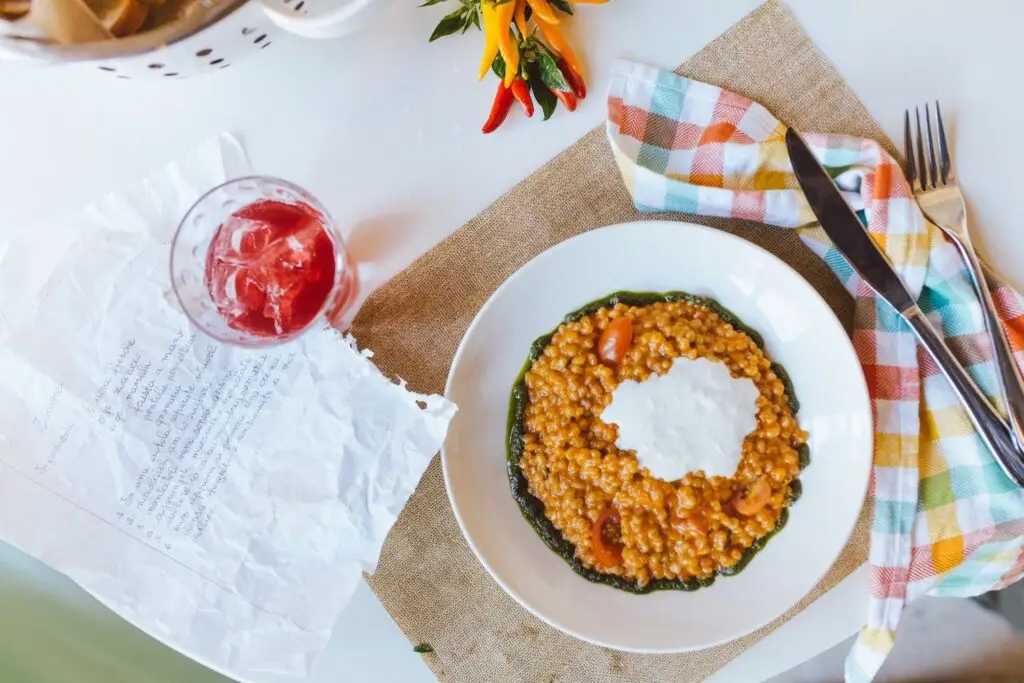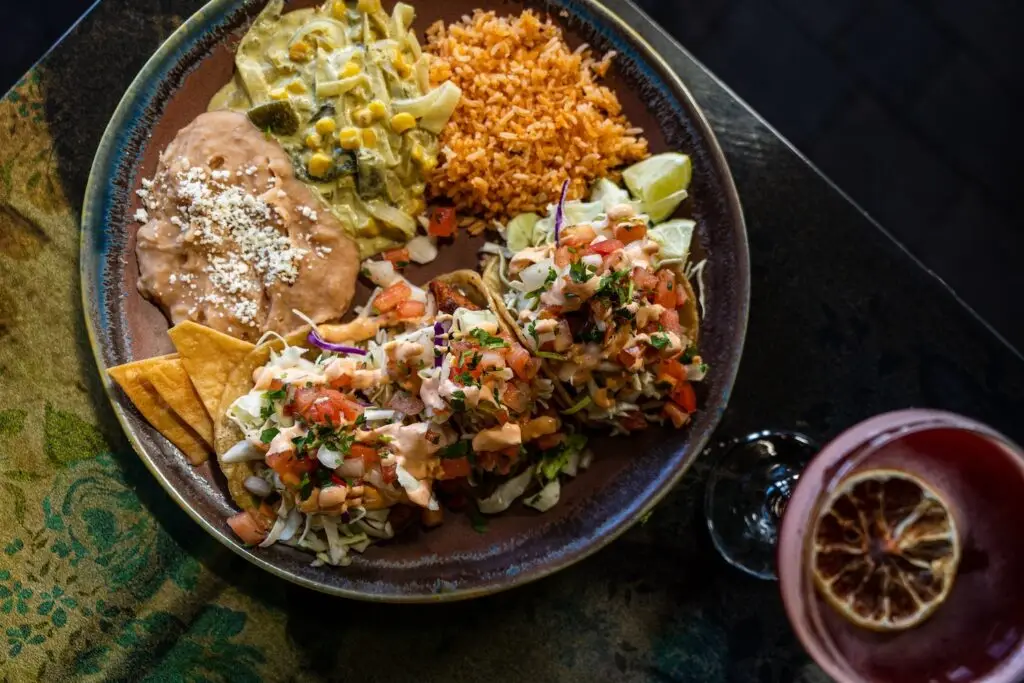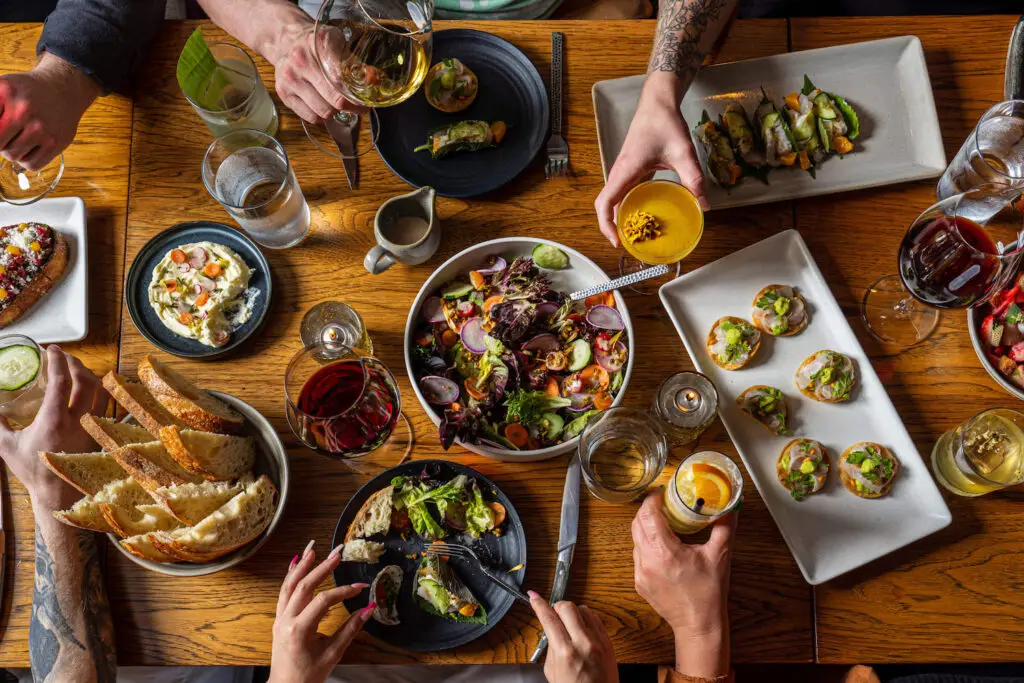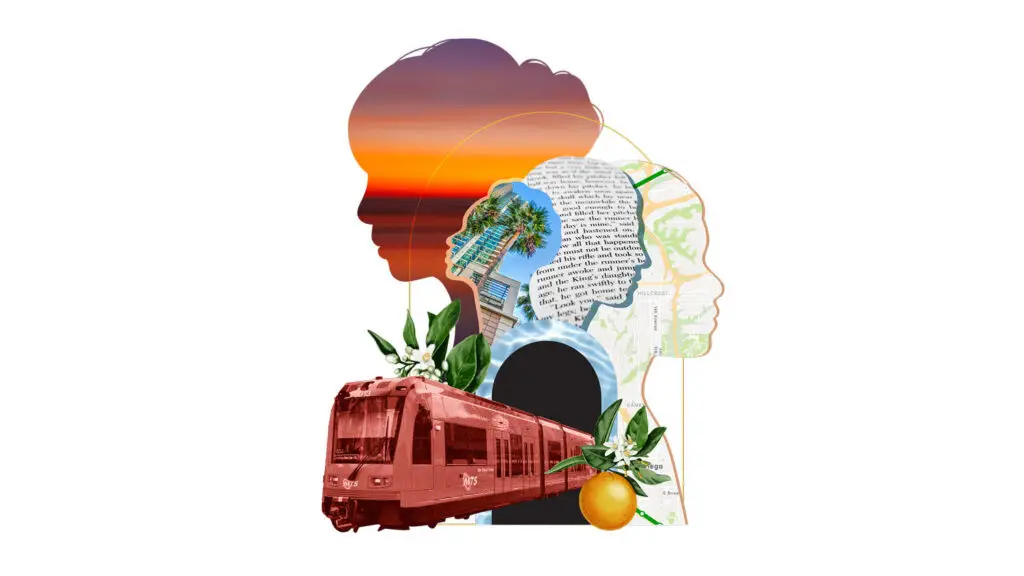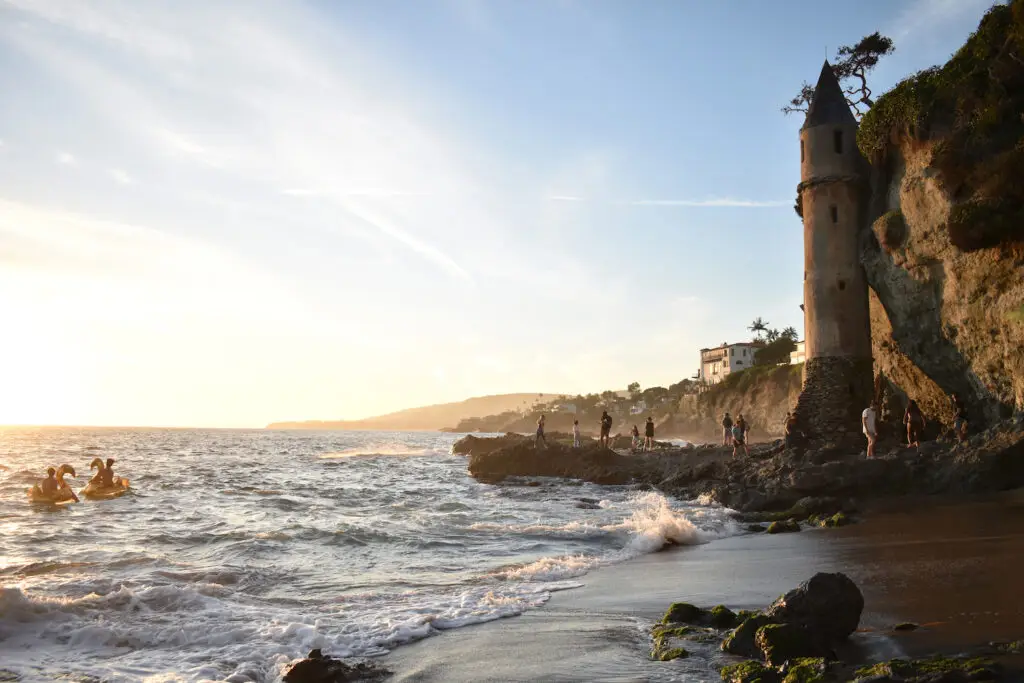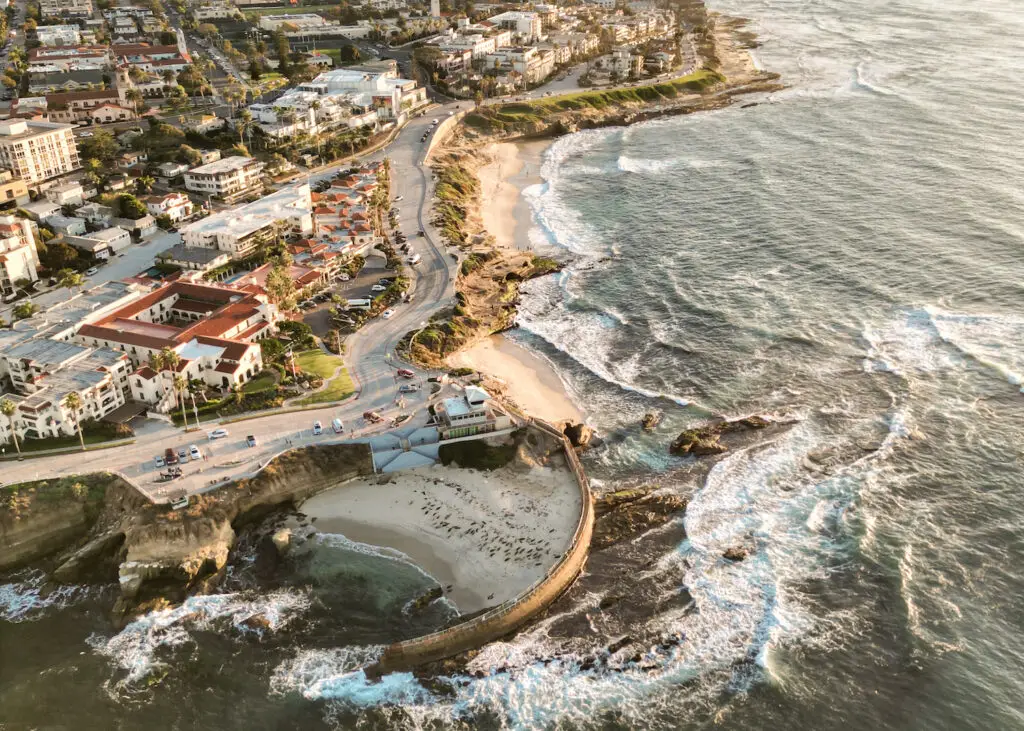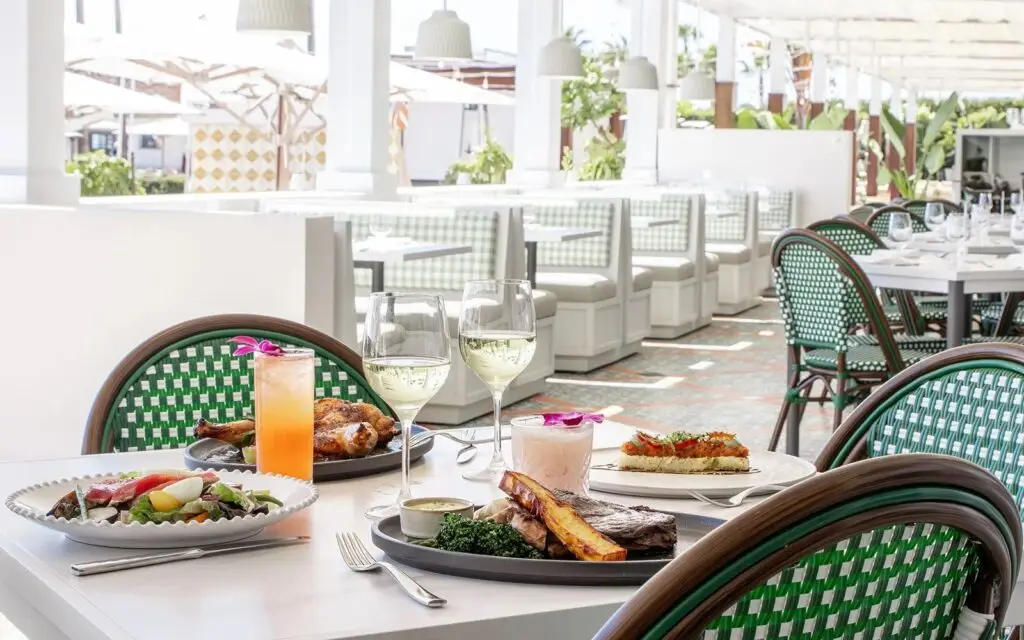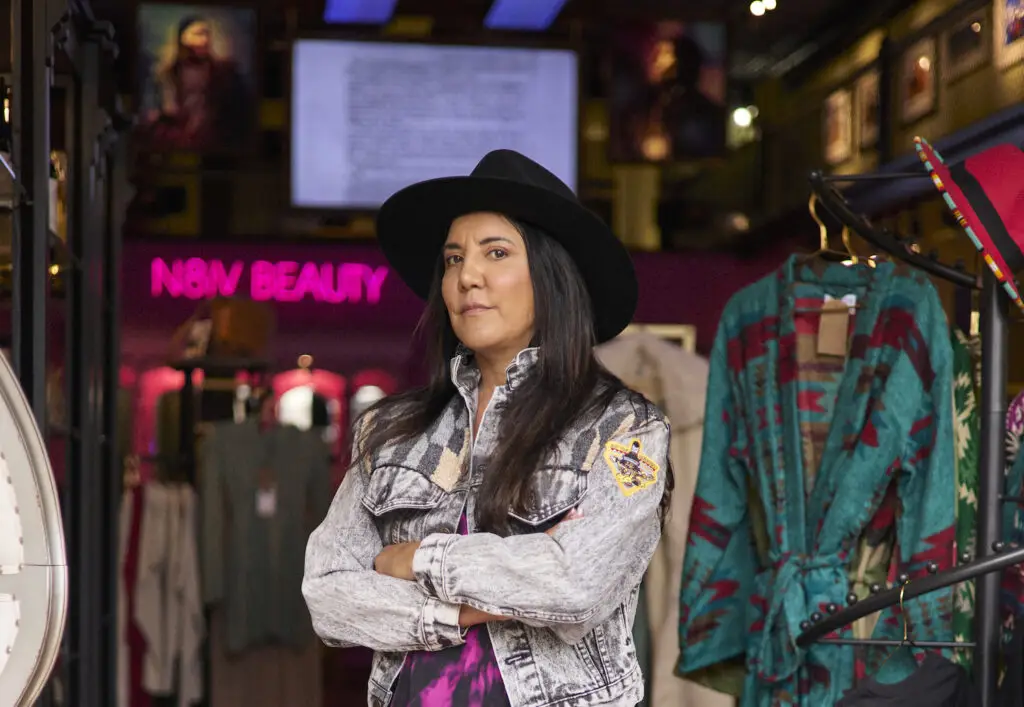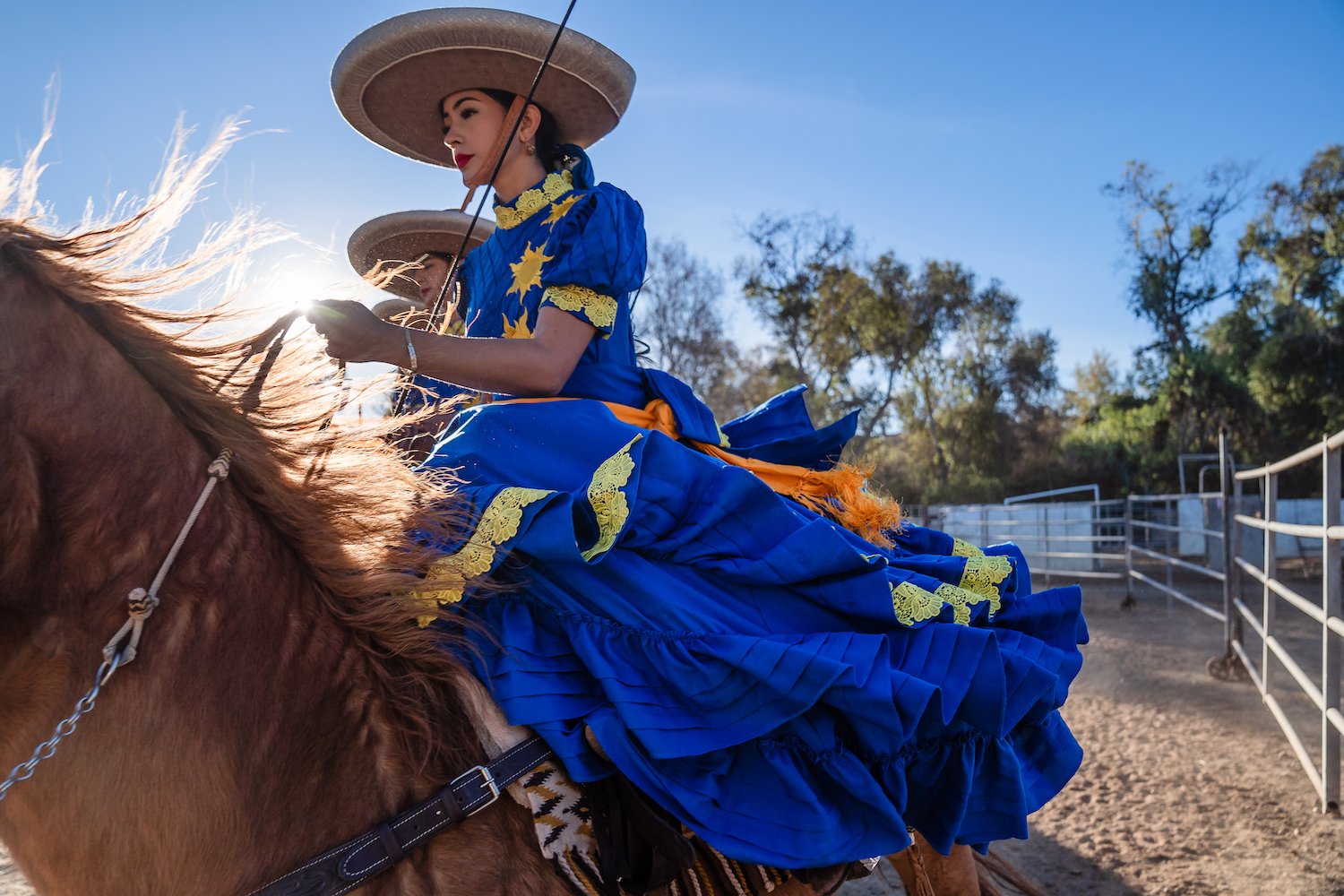The horses are spinning—which, admittedly, does not look like something horses should be able to do. It’s even more dazzling in multiples: eight mares and geldings pirouetting in place, the cobalt skirts of their riders’ flouncy dresses flaring out like irises stirred by the wind.
“This is a different tradition—you don’t see it everywhere,” says 17-year-old Dania Hernandez. She’s one of eight members of Las Reynas del Sol, a Bonita-based team of 11-to-17-year-old equestrians who practice escaramuza, a traditional Mexican sport.
Escaramuza is often compared to synchronized swimming, but on horses. Participants ride sidesaddle in long, puff-sleeved frocks. “It takes a lot of core strength,” says Andrea Barragan, Las Reynas del Sol’s 17-year-old captain.
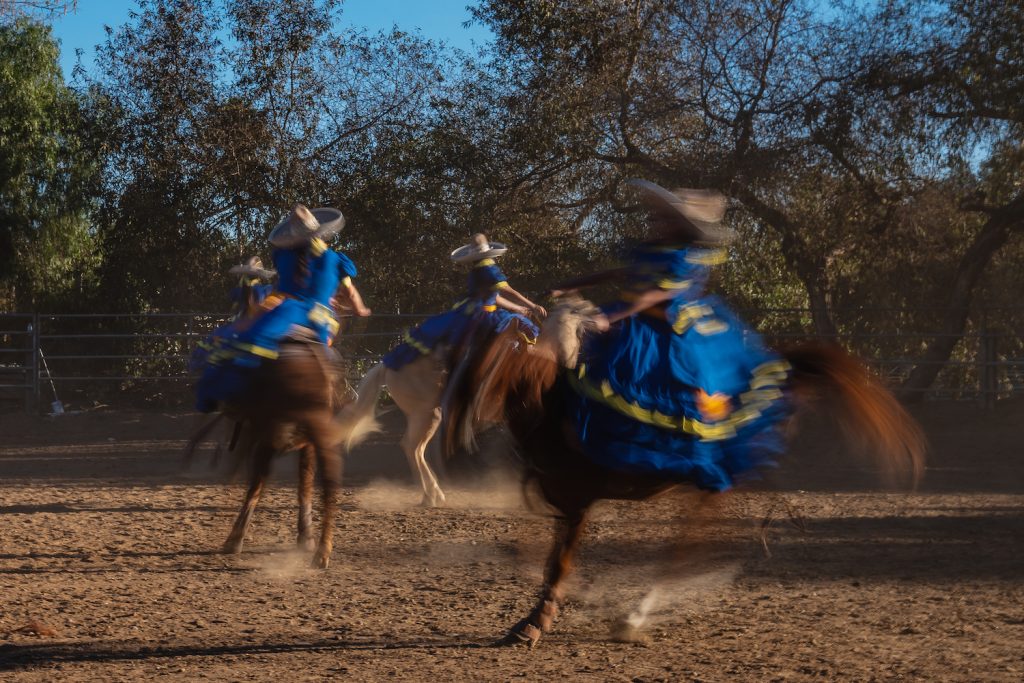
It’s one of only two events for women in the charreada, Mexico’s version of the rodeo, so it remains a little-known sport—even many people of Mexican descent are unaware it exists. Las Reynas del Sol is one of just three teams in San Diego.
Nevertheless, competitions are held throughout California in April through September. Teams perform individual routines, presenting 12 exercises. A lack of precision—or, worse, a collision—will cost them points.
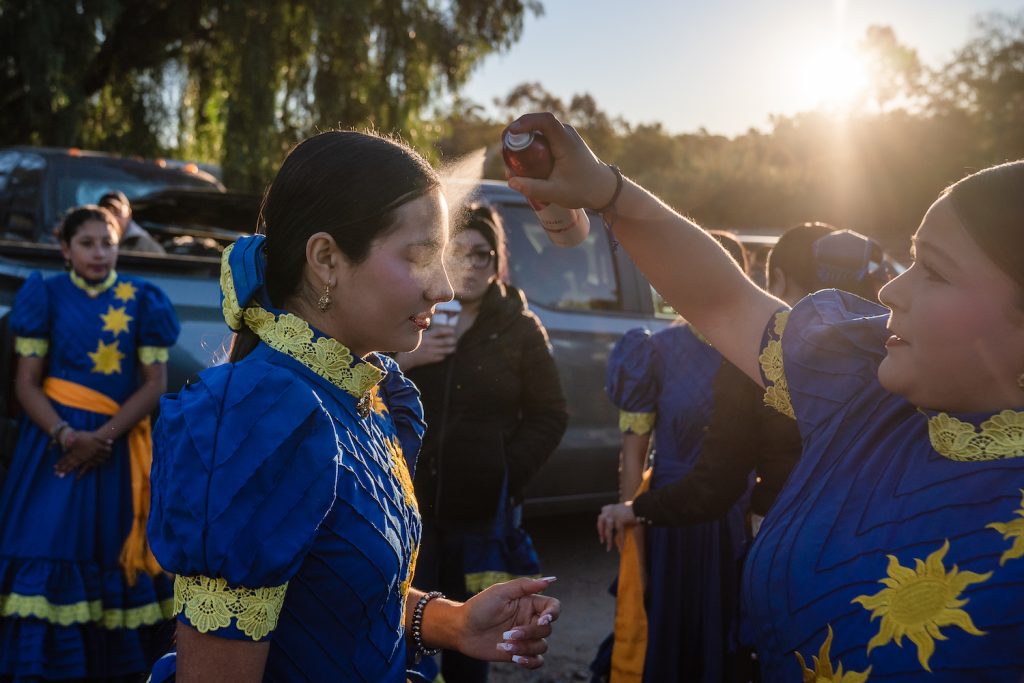
Marcela Goméz helps her cousin Dania Hernandez get ready to perform.
And it’s not enough to merely have a tight routine. The entire team also has to match visually—the smallest details, from the strap on their hats to the color of their leather boots, must be exactly the same. Points are taken away for any violations.
“They’re really harsh on grading you, but that’s what makes it interesting,” says Neftali Aquino, Las Reynas del Sol’s 24-year-old coach. “You have to look almost perfect.”
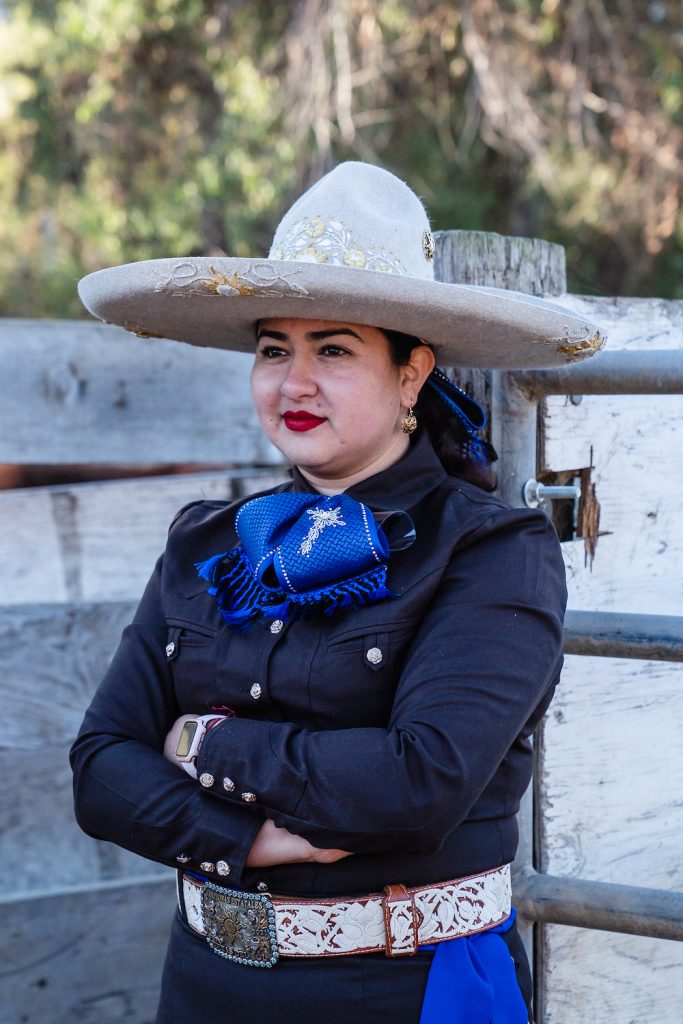
Neftali Aquino, the team’s 24-year-old coach.
Aquino was born and raised in the South Bay to a horseback-riding family. When she was five, her dad heard about an escaramuza team in San Ysidro and got Aquino involved. “They never expected me to love it so much,” she says.
She rode throughout most of her childhood, but her longtime team dissolved when she was 17. “I was so sad and so heartbroken that I was like, ‘I wanna have my own team. I wanna change the rules,’” she says. “‘I wanna do it my way, and I want to have a family.’”
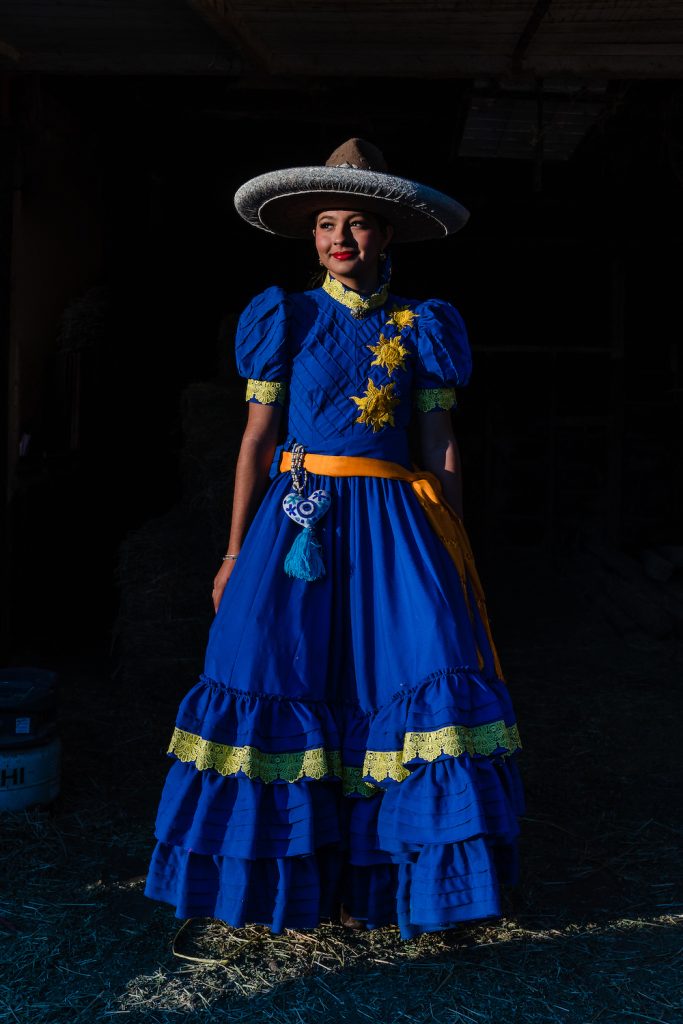
Dania Hernandez, 17.
Still fresh out of high school, Aquino set about finding riders. While some members had male relatives who were part of the charreada, none of the young women had experience with escaramuza.
“It was a challenge,” Aquino says. “I knew how to do things, but I didn’t know how to teach. So they learned with me, and I learned with them.”
Las Reynas del Sol won the California State Championship in 2021, securing the opportunity to go to Mexico and compete there. “That was the awakening of the group,” Aquino says. “It made them see that they did have the potential.”
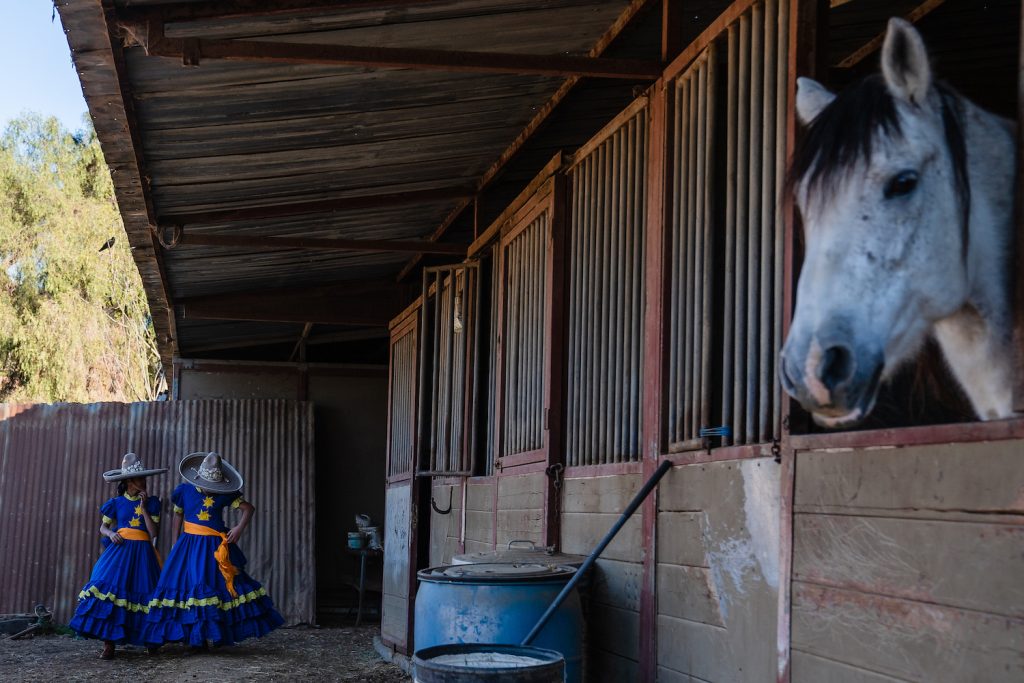
But, with the short timeline between competitions (the team nabbed the top spot in California in June, and Mexico nationals were slated for August), costs proved prohibitive, and the girls were unable to go. They would have to rent horses and saddles in addition to paying for travel and lodging, explains Judy Aguilar, the mother of 12-year-old team member Aaliyah Nario.
Because teams based in Mexico would have their own horses with them, Las Reynas would be at a disadvantage, riding unfamiliar mounts with whom they hadn’t practiced. “But that’s their dream,” Aguilar adds. “To compete in Mexico at least once.”
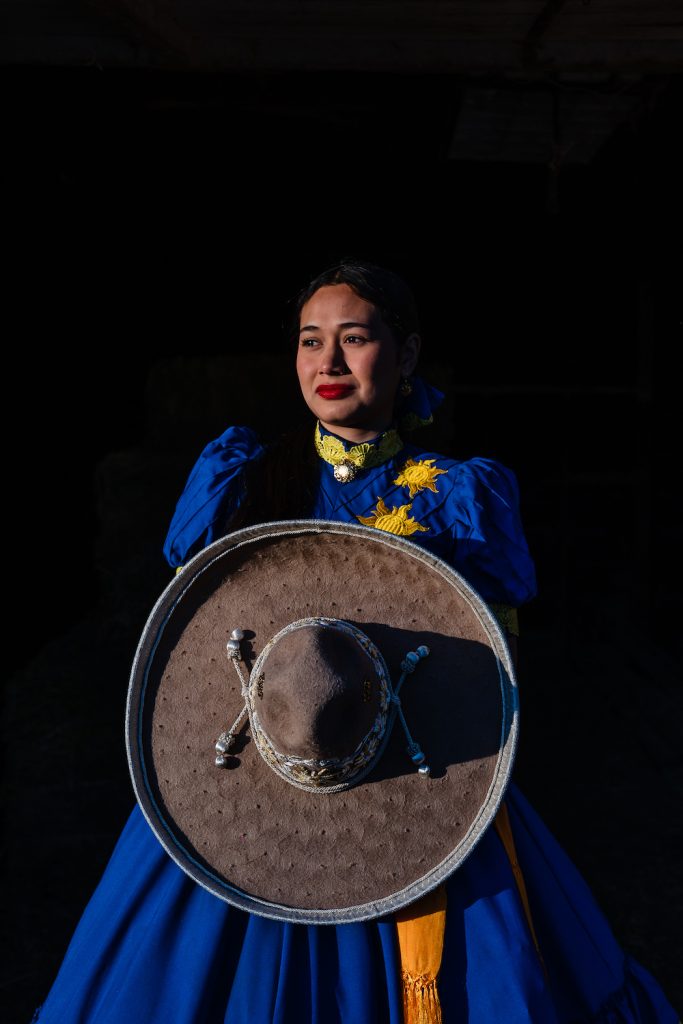
Leslie Martinez, 17. She’ll soon age out of Las Reynas’ “infantil” bracket and will have to join an adult team to compete.
With that goal in mind, the girls practice from 6:30 to 8:30 p.m. twice a week, all year long, and they spend several additional hours each week riding and caring for their horses. (“I get my homework done on Thursdays,” explains Leslie Martinez, a high school senior.)
At the team’s practice, parents linger near the paddock, chatting as their daughters trot their horses in a neat diagonal line. “It takes a village,” Aguilar says. “Them in there, and us out here, we have to work together. All the parents look after all the girls, not just their child.”
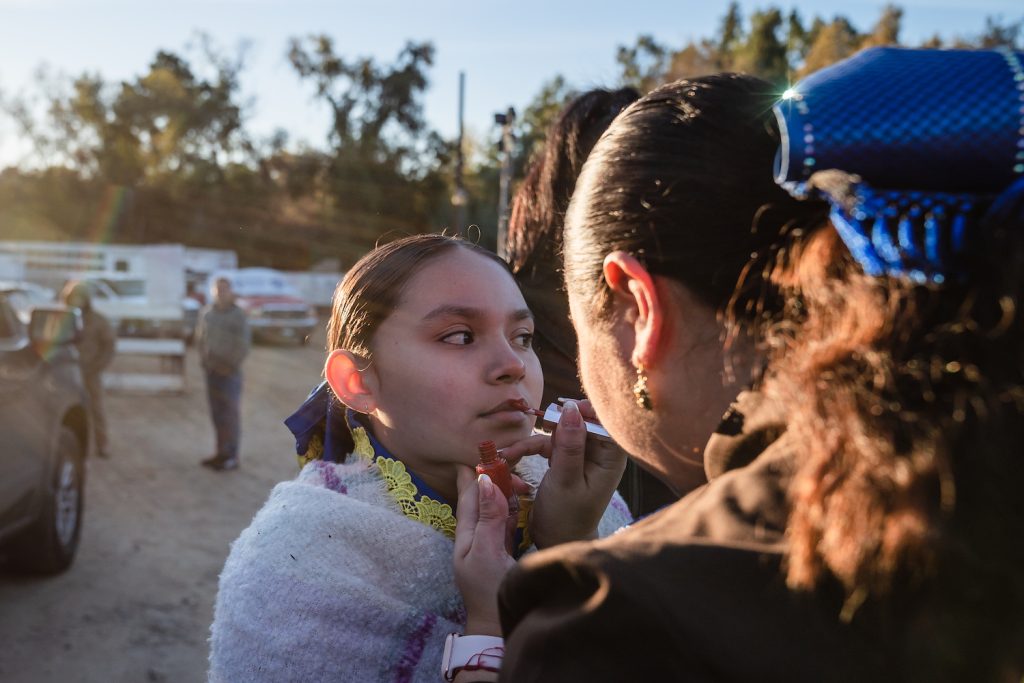
The extra support helps temper the inherent dangers of the sport, belied by the elaborate visuals. Aquino herself only recently recovered from a surgery necessary after she fell from her horse and broke her hip. “You have to look as feminine as you can—but be tough, because the horse can kill you,” Aquino says.
Many of the girls admit that the juxtaposition is what appeals. The dresses drew them to escaramuza, but the adrenaline rush is why they work so hard to be the best.
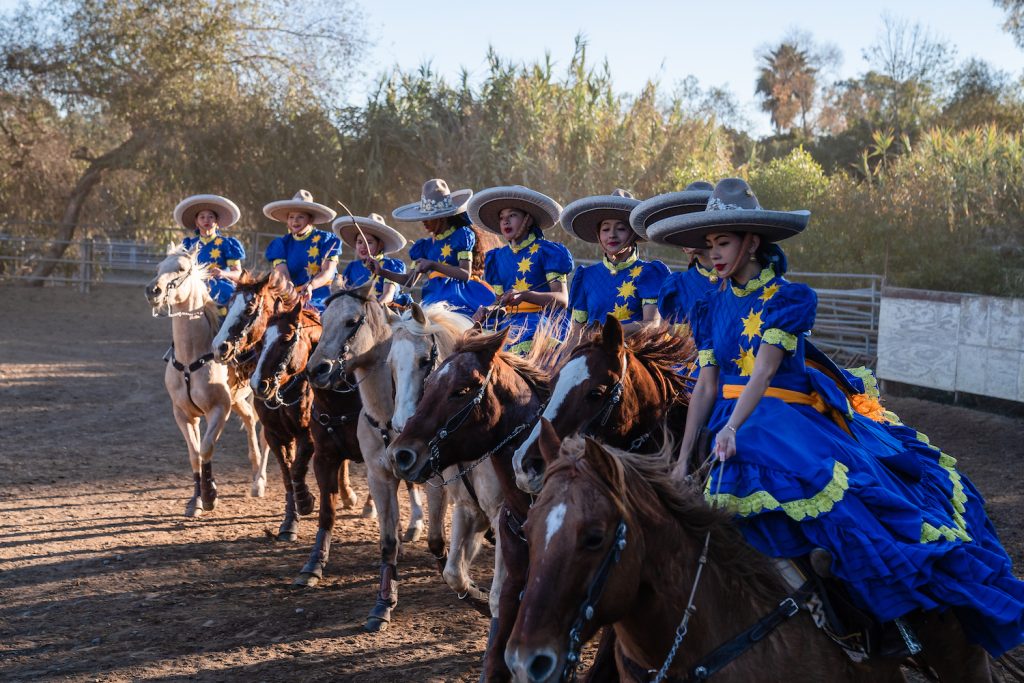
With the wide skirts covering the riders’ legs, it’s easy to forget they’re perched precariously on one side of the saddle.
“At a certain point, you live for this,” Aquino says. “You don’t care [about] being cold. You don’t care that your legs are bruised up and you have blisters on your butt and you can’t feel your toes and you broke your nail ’cause your horse was fighting with you. You don’t care if you go to sleep late and wake up really early—it doesn’t matter. You just do it because you like it.”
